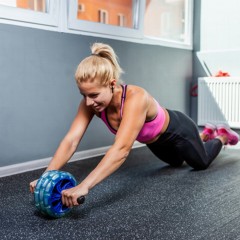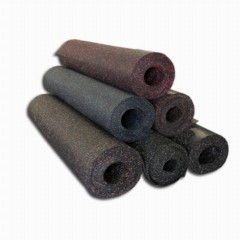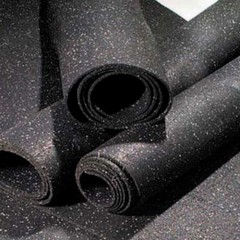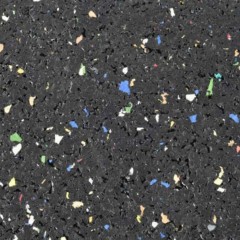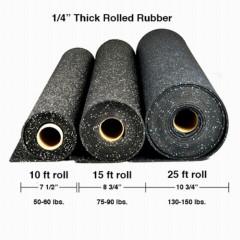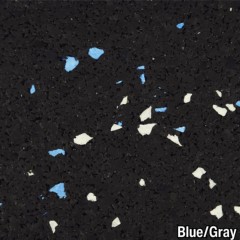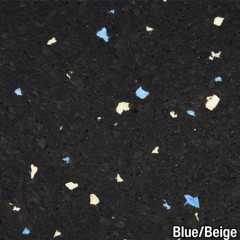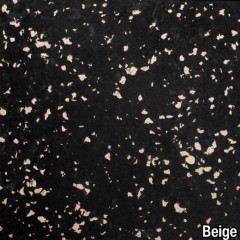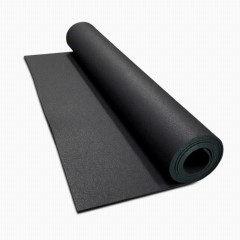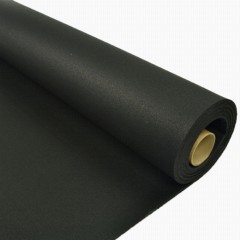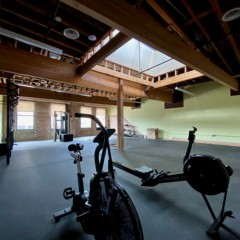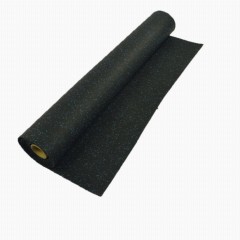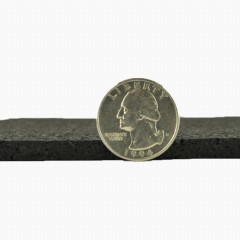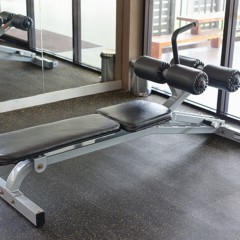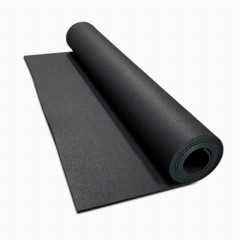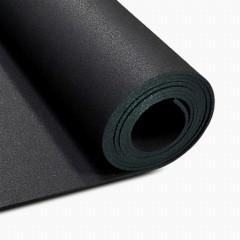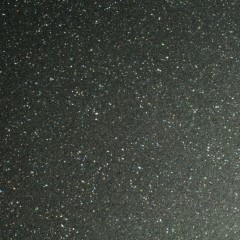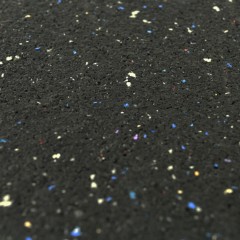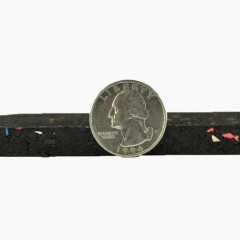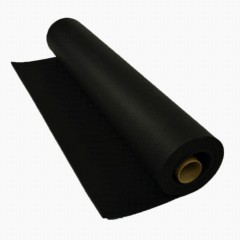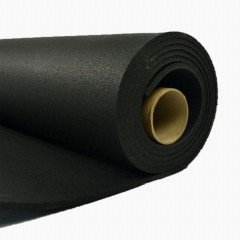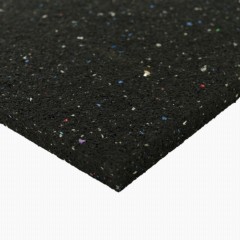US Rubber Flooring Options
When you want the highest possible quality in rubber flooring, count on American-made rubber floors. This type of floor stands up when used in high-traffic areas and can handle a high-stress workout in a commercial or home gym or at a recreational facility. It delivers plenty of traction and a high level of durability.
US Rubber flooring from Greatmats is available in many different formats, colors, and thicknesses. By sourcing our rubber floors from American manufacturers, we can guarantee the purest materials and most stringent manufacturing tolerances. Our customer service experts can help you match the appropriate flooring to the use cases you have in mind.
Types of US Rubber Flooring
At Greatmats, we offer a few different families of US Rubber flooring.
Rolled Rubber Pacific
Our rolls of Pacific US Rubber flooring are generally 4 feet in width with a custom-cut length available (at a 15-foot minimum).
Our rolls are available in colors including:
- Basic colors of black, one-color flecks, or regrind (Pacific)
- Special one-color fleck options (Pacific Custom)
- Mixture of two or more color flecks (Pacific CrossTrain, which has a minimum order requirement, and Pacific CrossTrain Custom, which requires a larger minimum order)
Rubber Tile Interlocking and Interlocks Pacific
We offer two different types of interlocking US Rubber flooring tiles. One option is the interlocking design that measures 2-by-2 feet, called the Interlocking model. It does not ship with border edging, meaning you’d have to cut the edges off to fit against a wall.
The other design has interlocking borders, called the Interlocks model. After connecting the interlocking tiles for the flooring layout, the border edging pieces fit tightly into the main tiles without needing adhesive to deliver a finished edge. (However, the borders for the Interlocks tiles do not fit the Interlocking tiles.)
Both designs offer different color options, including:
- Basic colors of black, one-color flecks, or regrind (Pacific)
- Special one-color fleck options (Pacific Custom)
- Mixture of two or more color flecks (Pacific CrossTrain, which has a minimum order requirement, and Pacific CrossTrain Custom, which requires a larger minimum order)
Straight Edge Pacific
The straight-edge US Rubber flooring tiles measure 2-by-2 feet. Each edge is precisely cut, allowing the tiles to slide tightly together for installation. You will need to glue these tiles down, rather than performing a dry-lay installation.
The different color options include:
- Basic colors of black or one-color flecks (Pacific)
- Special one-color fleck options (Pacific Custom)
- Mixture of two or more color specks (Pacific CrossTrain, which has a minimum order requirement, and Pacific CrossTrain Custom, which requires a larger minimum order)
Survivor Rubber Tile Interlocking
US Rubber Survivor sport floor is available in 2-by-2-foot interlocking tiles, ensuring a tight fit without needing to use adhesive. These tiles feature a higher concentration of color flecks than the Pacific designs.
The different color options include:
- Big Chip for one-color flecks
- Biggie Smallz for a two-color fleck mixture
Features and Benefits for US Rubber Flooring
Several features and benefits are available with our US Rubber flooring products, including:
- Several years of durability
- Use rolls or interlocking tiles
- Multiple thickness measurements
- Recycled rubber can achieve LEED points
- Provides a sure footing even when wet
- Variety of color fleck options on a black base
- Noise absorption capabilities
- Tight interlocking edges without the need for glue
- Easy to clean and maintain
- Several price points available
Use Types for US Rubber Flooring
With rubber US games flooring and traditional flooring, you have several potential usage locations with these products, including:
- Home gyms
- Commercial gyms
- Fitness studios
- Weight rooms
- Locker rooms
- Basements
- Decks
- Patios
- Retail stores
- Doggy daycares
- Veterinarian exam rooms
- Tradeshows
- Events
- Entryways
- Warehouses
- Industrial areas
- Production lines
- Assembly lines
- Golf courses
- Ice rinks
US Rubber Flooring Q&A
What are the best low-odor rubber flooring tiles and rolls?
The
best low-odor rubber flooring tiles and rolls include Rolled Rubber Pacific products. Their unique design makes for a seamless floor surface, and they are MAS Certified Green.
How do you clean rubber flooring?
Learning
how to clean rubber flooring can be done in four steps. Use a vacuum or broom to remove dry debris from the virgin or synthetic rubber flooring. Follow up with warm water and a neutral pH cleaner to mop the rubber. Use a wet-dry vacuum or a dry mop to soak up any excess water. Allow the rubber to air dry before using the flooring.
Is rubber flooring expensive?
Customers often wonder whether
rubber flooring is expensive. Depending on the brand and model selected, the cost per square foot can be lower than expected. US Rubber Survivor sport floor carries an average price point compared to other rubber flooring options.
What is the best weightlifting flooring for a home gym?
The
best weightlifting flooring for a home gym in most cases is the Pacific Interlocking Rubber Tile with an all-black color. It measures 2-by-2 feet and 1/2-inch in thickness. You can safely place exercise machines and other weightlifting equipment over the top of it in a commercial, school, or home weight room.
What is recycled rubber flooring?
Recycled rubber flooring is a roll or tile of flooring consisting of rubber that’s been recycled after other uses, such as old truck tires that reached the end of their lifespan. Using recycled rubber for sport flooring is just as durable as using virgin rubber. It’s safe to use around children and pets.
 $338 /sqft You Save 19%Ships Out in 7-10 Working Days SustainableShop$324 /sqft You Save 19%Ships Out in 7-10 Working Days SustainableShop$8821 /Roll You Save 19%$2.21/sqftShips Out in 7-10 Working Days SustainableShop$221 /sqft You Save 19%Ships Out in 7-10 Working Days SustainableShop$221 /sqft You Save 19%Ships Out in 7-10 Working Days SustainableShop$221 /sqft You Save 19%Ships Out in 7-10 Working Days SustainableShop$221 /sqft You Save 19%Ships Out in 7-10 Working Days SustainableShop$200 /sqft You Save 20%Ships Out in 7-10 Working Days SustainableShop$138 /sqft You Save 19%Ships Out in 7-10 Working Days SustainableShop$124 /sqft You Save 20%Ships Out in 7-10 Working Days SustainableShop$293 /sqft You Save 19%Ships Out in 7-10 Working Days SustainableShop$293 /sqft You Save 19%Ships Out in 7-10 Working Days SustainableShop$293 /sqft You Save 19%Ships Out in 7-10 Working Days SustainableShop$270 /sqft You Save 19%Ships Out in 7-10 Working Days SustainableShop$250 /sqft You Save 20%Ships Out in 7-10 Working Days SustainableShop$270 /sqft You Save 19%Ships Out in 7-10 Working Days SustainableShop
$338 /sqft You Save 19%Ships Out in 7-10 Working Days SustainableShop$324 /sqft You Save 19%Ships Out in 7-10 Working Days SustainableShop$8821 /Roll You Save 19%$2.21/sqftShips Out in 7-10 Working Days SustainableShop$221 /sqft You Save 19%Ships Out in 7-10 Working Days SustainableShop$221 /sqft You Save 19%Ships Out in 7-10 Working Days SustainableShop$221 /sqft You Save 19%Ships Out in 7-10 Working Days SustainableShop$221 /sqft You Save 19%Ships Out in 7-10 Working Days SustainableShop$200 /sqft You Save 20%Ships Out in 7-10 Working Days SustainableShop$138 /sqft You Save 19%Ships Out in 7-10 Working Days SustainableShop$124 /sqft You Save 20%Ships Out in 7-10 Working Days SustainableShop$293 /sqft You Save 19%Ships Out in 7-10 Working Days SustainableShop$293 /sqft You Save 19%Ships Out in 7-10 Working Days SustainableShop$293 /sqft You Save 19%Ships Out in 7-10 Working Days SustainableShop$270 /sqft You Save 19%Ships Out in 7-10 Working Days SustainableShop$250 /sqft You Save 20%Ships Out in 7-10 Working Days SustainableShop$270 /sqft You Save 19%Ships Out in 7-10 Working Days SustainableShop